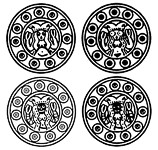Summer Reading
By Stuart Wade, Fri., June 1, 2001

Banvard's Folly: Thirteen Tales of Renowned Obscurity, Famous Anonymity, and Rotten Luck
by Paul CollinsPicador USA, 272 pp., $25
History usually remembers its winners, and the occasional high-profile loser, but what about its many near-misses? Somewhere between glory and disgrace lie the one-time contenders who -- because of circumstance, character flaws, or ill fortune -- fell short of greatness, smack-dab into the abyss of obscurity.
Banvard's Folly: Thirteen Tales of Renowned Obscurity, Famous Anonymity, and Rotten Luck offers an utterly fascinating baker's dozen of these lost souls. Author Paul Collins rummages through the dustbin of history to revive these long-forgotten runners-up of science, art, and business, including hollow-earth theorist John Symmes and multimedia pioneer John Banvard.
In the century before motion pictures, American painter, actor, and riverman John Banvard won acclaim for bringing to life the Mississippi River -- the grandest metaphor of its time -- for audiences worldwide. With his detailed, supposedly three-mile-long panorama of Mississippi scrolling behind him, Banvard would regale huge audiences with river lore and lively anecdotes. Banvard proved a wonderful, one-man show; if only he had remained exactly that. The showman's undoing was not only the hubris that came with branching into business in New York, it was also his chief rival: P.T. Barnum. Where Banvard the performer might have endured as a household name, Banvard the businessman proved no match for the Greatest Show on Earth. Within 10 weeks the painter and his new venture, a Manhattan museum, went bankrupt. One century later, virtually all of his work, including his colossal masterpiece, has disappeared.
Passionate yet misguided scientific obsession also earns a place in Banvard's Folly. Although he wasn't the first to traffic in hollow-earth theories, science enthusiast John Symmes' ideas on the topic were compelling enough to attract the admiration of Jules Verne and Edgar Allen Poe. Symmes' unusual hollow-earth twist posited that one could enter habitable, inner spheres of the planet via convenient openings located at the North and South Poles. After Amundsen and Peary returned from their successful polar expeditions with news of some very closed and decidedly solid Poles, Symmes and his theory were finished.
In this schizophrenic era of preordained blockbusters and bean-counting cutbacks in publishing, it's good to see a project like Banvard's Folly being rescued from the fate its peculiar subjects suffered. Not long ago a book like this one, lacking starpower or stereotypical bestseller potential, would be as forgotten as the historical figures it profiles. Luckily for Collins, the offbeat cachet McSweeney's first gave this topic, after publishing three of the author's profiles, provided the impetus that led to the Picador book.







